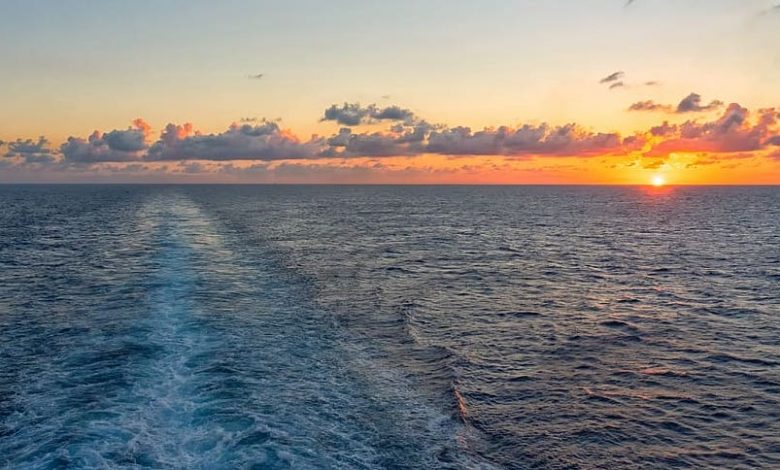Mayday: Liners negotiate April but brace for incoming storm

Lessons learned from the global financial crisis have helped staunch losses for the world’s top liners who held firm in April, blanked record numbers of sailings, and managed to record higher rates for last month than in the same period last year.
Crunching the numbers for the past month, Lars Jensen, the CEO of SeaIntelligence Consulting, noted via a LinkedIn post today that for the contract indices, the CCFI is 9% higher year-on-year and the Xeneta Shipping Index (XSI) is 11% higher.
For the spot indices the SCFI is 9% higher and the World Container Index (WCI) is 11% higher.
In the Pacific the SCFI and WCI spot rates are up between 0.2% – 2.9% depending on coast and index chosen. The contract rates, however, are up 12% according to CCFI.
For Asia- Europe the SCFI and WCI spot indices are up 12% to North Europe and 18-21% to the Mediterranean. The CCFI contract rates are up 5% to North Europe and 15% to the Mediterranean.
From XSI the combined US import index is 33% higher and the Europe import index is up 7.5%
“With VLSFO bunker fuel for April 2020 being 37% lower than IFO380 fuel in April 2019 we should expect some lowering of rate levels going forward to account for the fuel effect. However, in terms of base rate levels compared to last year there are not yet quantitative signs that the carriers are about to break ranks,” Jensen wrote today.
Appearing on this site’s Maritime CEO Leader Series last week, Jensen warned the container shipping sector will get hit “disproportionally” hard compared to other cargo sectors.
Jensen predicted that carriers will suffer a combined 10% volume drop this year, but he praised liners’ collective resolve thus far in holding the line on freight rates.
Having negotiated the past month well carriers are facing up to darkening prospects in May, a month that CMA CGM’s Rodolphe Saade said recently would be the toughest for all liners.
The latest XSI Public Indices report from Xeneta show that rates actually climbed during April. The rise, although small at 0.7%, reverses the decline seen in March, reinstating a trend of gradual monthly increases that began in October 2019.
Xeneta CEO Patrik Berglund commented in a release earlier this week: “Carriers have been working hard to make adjustments to protect rates, aggressively withdrawing capacity from the market and adopting more creative strategies.”
“Carriers are, and will be, subject to huge pressure in the immediate future,” Berglund added. “A disciplined approach will help safeguard rates, but, given the economic dire straits, will individual carriers hold ranks or be forced to reduce rates in a bid to secure business and claim market share?”
Carriers will have looked at the latest Purchasing Managers’ Indexes (PMI) readings for April with concern as they clearly show a massive weakening of global manufacturing.
“The manufacturing PMI readings serve as a bellwether for container shipping volumes for the months ahead, and recent data suggest that 2020 will be a stress-test for container carriers, perhaps on an unprecedented scale,” BIMCO’s chief shipping analyst Peter Sand wrote in a new report published yesterday.
Flash PMI readings in the US and Eurozone composites declined to 36.9 and 33.6 index points respectively, while China’s manufacturing PMIs in April highlighted sluggish recovery from March. The PMI figure from Caixin highlighted a contraction to 49.4 index points, while the figure from the National Bureau of Statistics China (NBS) showed an expansion to 50.8 index points.
The common denominator between the two was the New Export Orders sub index (at 33.5 points), which in both cases plummeted amid slowing demand from the rest of the world.
Global manufacturing activity is slowing on the back of the constrained labour force and faltering demand, and data from the US Census Bureau highlight how US retail sales effectively slammed into a brick wall in March 2020. As the US entered a state of lockdown in March, clothing and clothing accessories stores saw retail sales drop 50% from February 2020 as well as year-on-year.
Similarly, sales in furniture stores dropped 26.8% from February, while motor vehicle and parts dealers had their sales slashed by 25.6%, also compared with February. The products and parts sold in these types of stores constitute a significant fraction of all seaborne containerised goods, and such dramatic drops in US retail sales are indicative of the calamity that container carriers face.
2020 is now expected to see the sharpest contraction in global seaborne container trade on record according to the world’s largest broker, Clarksons Platou, who issued a sobering box report last Friday.
The massive volume of blanked sailings announced in recent weeks is set to create new records in terms of the inactive containership fleet, which analysts at Alphaliner are now saying will breach the 3m teu mark for the first time meaning some 13% of the entire global box fleet will be out of work.
According to Sea- Intelligence, the volume loss alone from the record number of pandemic-linked blanked sailings will cost the top 15 carriers more than $6bn in 2020, rendering the industry loss-making in 2020, reversing the $5.9bn profit the top 15 carriers managed combined last year. Sea-Intelligence warned that a failure to prevent a simultaneous rate collapse could lead to the liner industry losing a “staggering” $23.4bn in 2020.”
Stay tuned to Splash next week for an interview with the head of one of the world’s largest carriers in the next instalment of the Maritime CEO Leader Series powered by Ocean Technologies Group.
